As a college student, how you fit in within the demographics of students who take calligraphy lessons is quite interesting: either you find yourself sticking out as the oldest among a crowd of elementary school students, or you’re conspicuously the youngest among adults over twice your age. (To be fair, as a foreigner, you pretty much stick out wherever you are but that’s beside the point!) The reason for this is that students who pursue calligraphy as an extracurricular activity typically practice in clubs at school, rather than taking outside lessons, and working folks, of course, hardly have time to take these kinds of lessons.
My class was the latter, and the two other students were both in their 50’s or 60’s (I never asked directly) and at least one of them was a grandparent. Since they’ve both been practicing calligraphy for at least 8 years, their writing already looked perfect in my eyes, so at first I wondered why they were still taking classes. However, it didn’t take long for me to come across the answer: these lessons were also important social gatherings. The students and our instructor always chatted about anything and everything while during our lessons, and the atmosphere was always very warm and friendly. I could tell that, while the student-teacher relationships were always upheld (by the way they were speaking), they were truly friends as well.
Comparing the cultural emphasis on handwriting in Japan to two other countries that I’m familiar with, there’s a similar attitude in China, but America doesn’t value handwriting as highly. My dad, an immigrant from China, was very proud of his handwriting and calligraphy, but he realized that these skills are not nearly as important in America, so unlike my calligraphy instructor, he didn’t feel the need to comb over my handwriting as a child.
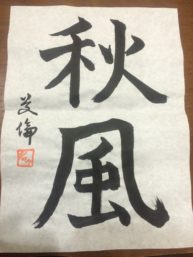
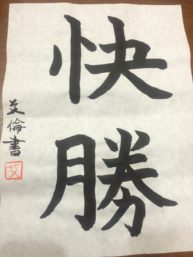
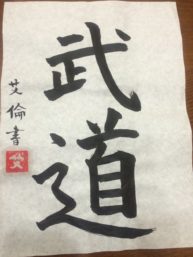
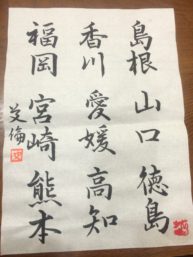
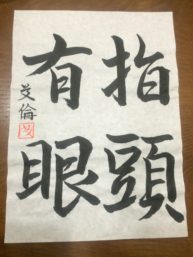
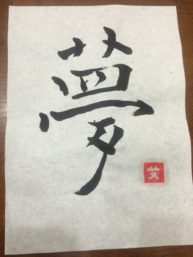
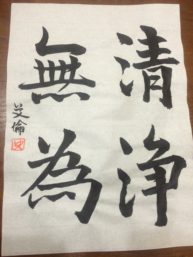
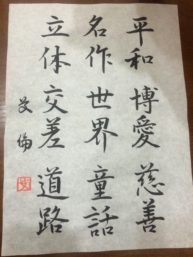

Wow! From the pictures, it looks like your time with the instructor really paid off! It was very interesting to read your post, because the demographic of the group you interacted with in your CIP is so different from most people, but it was cool to see that you fit in just fine!
I know that you were already a quasi kanji expert before you even started the lessons, so I have a question: would you recommend this CIP activity to a student who maybe didn’t have as in-depth knowledge of kanji? Do you think that it would help these sorts of students get better at kanji in the classroom?
Hi Alex!
I would definitely still recommend it to someone who’s interested in calligraphy but not confident about their kanji knowledge. It doesn’t really require in-depth kanji knowledge at all–I think anyone who’s been admitted into KCJS is more than qualified!
I suppose doing calligraphy helps you get better at kanji to some extent, but more importantly I think it helps foster an interest in and deeper appreciation of kanji characters in general.
This is so cool! Do you think you’ll try to continue Shodo back in the states? Before this post the only thing I had seen concerning shodo is the tv show where quasi famous people/ actors have to write difficult characters and be graded on it.
Thanks for your comment, Katie!
I’d love to continue practicing it in the States! I’m sure I’d be able to get my hands on the materials–time is the more pressing concern, really…
Hello Alan! Calligraphy sounds fun. The only experience I have had with calligraphy was that at the high school we visited in our fall semester. It looks easy but it’s impossibly hard to do. You mentioned that the older people used the calligraphy lessons as a way to socialize. What were some of the other reasons people attended the classes? Your calligraphy of the kanji for nothing is very nice.
Hi Isaac!
Actually, I became interested in calligraphy when we did it that one time at the high school! It really is a lot more difficult than you’d expect at first, that’s for sure.
For the other students in my class, who I believe are housewives whose children no longer live in the house, I think taking up calligraphy as a hobby was also a way to keep themselves busy doing something they enjoy.
Thanks for the kind words!
Alan your calligraphy are amazing! I wondered how long you’ve been practised? Actually, in China my grandpa and my mom are practising calligraphy right now, and I’m thinking of practising in the summer time. I wonder have you ever compared the difference between Chinese calligraphy and Japanese calligraphy?
Thanks Jasmine!
I actually don’t know much about Chinese calligraphy, having never done it before, but it would definitely be interesting to compare to see if the techniques are different at all.
One difference is that the stroke order for a few characters are different, like 右 (the slanted stroke is done first in Japanese but second in Chinese) and 必 (in Chinese you write 心 first, while in Japanese you do the 3 dots last).
Also, in Japanese you have to write hiragana too. I kind of avoided writing much hiragana at all–hiragana is actually more difficult to write than kanji because of the lengthy strokes and the flow and balance of the characters (e.g. ね).
Nice work! I did shamisen but noticed the same things you did. Most of the students, besides the ones from KCJS, were much older than us and I thought that was pretty neat. It’s nice to see the older members of the community still involved with arts and culture. Do you think you will continue calligraphy back in the states?
Hi Isabela!
I’d really love to continue it if I had the time. Maybe I could get my parents give feedback on my writing…